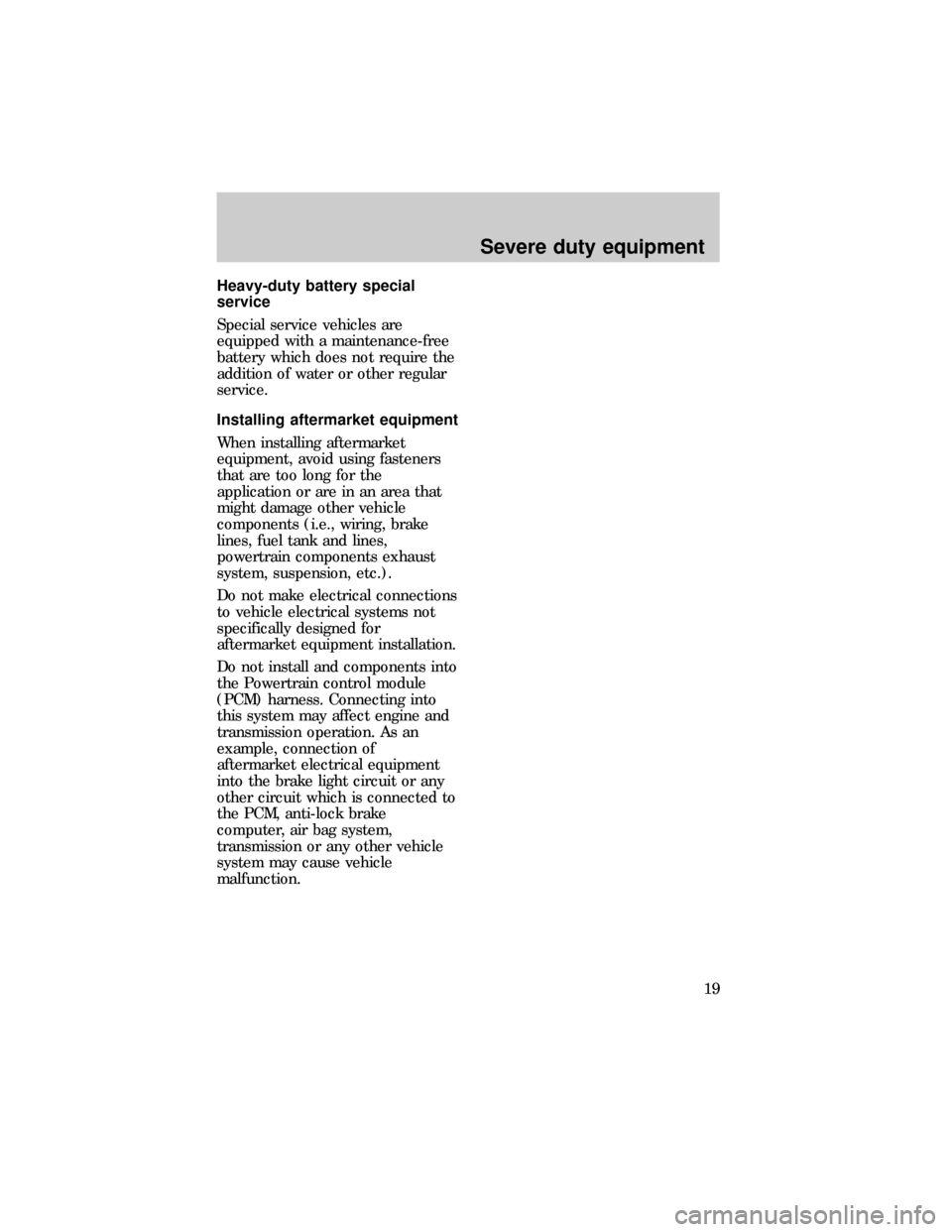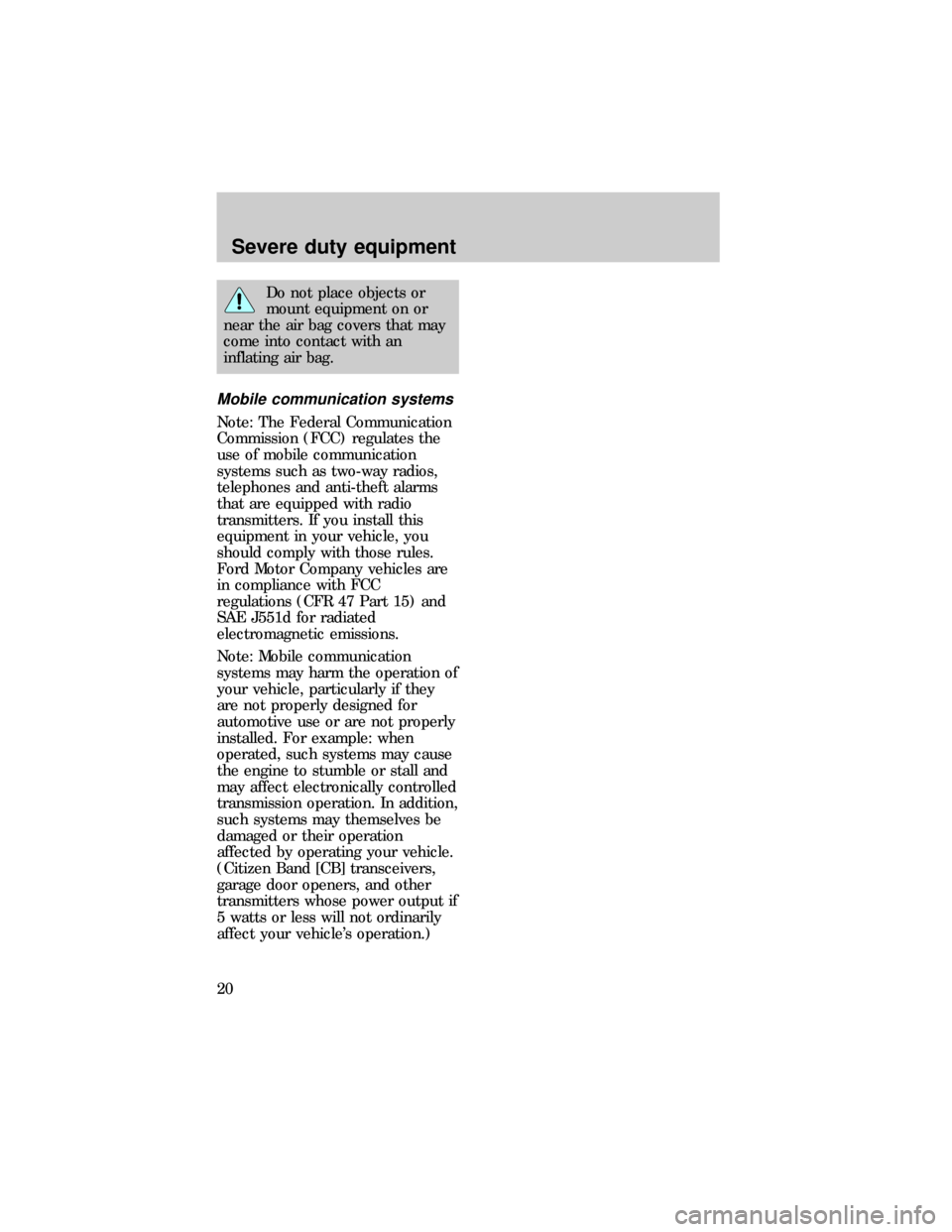Page 16 of 28
supported on a jack or jack stands,
inspect the converter and exhaust
system. Be sure that no foreign
materials are caught in the exhaust
system shielding. Any underbody
sealant or foreign material should
be removed and all possible
contaminants cleaned off of the
shell surfaces.
Visual inspections
Inspect the radiator, engine,
transmission and power steering
for fluid leaks and deterioration
every 24,000 km (15,000 miles) or
three months, whichever comes
first. Any leakage should be
corrected immediately. It is normal
for minor seepage to occur at
gasketed surfaces.
Check the routing of the
speedometer cable and cable
housing. Be sure that it flows
smoothly over its entire area
(routed away from the exhaust
system components) and is free of
kinks or crushed areas.
Maintenance recommendations
16
Page 18 of 28

SPECIAL SERVICE EQUIPMENT
The Explorer is not designed
nor intended to be used as a
pursuit vehicle or an
ambulance.
The following optional equipment
is designed to meet Ford
Corporate Product Standards;
however, the equipment does not
meet corporate guidelines relative
to police packages. therefore, the
optional equipment is intended for
use in limited law enforcement
services only. Use of DSO special
service options does not imply nor
allow use as a pursuit vehicle.
Components that are part of some
available options are listed below
and on the following pages, along
with a brief outline of their major
features.
ELECTRICAL
Heavy-duty alternator
Handling the high electrical loads
imposed on special service vehicles
by the broad range of necessary
equipment requires a high ampere
output alternator.
The 4.0 L SOHC or 5.0 L Explorer
engine, when equipped with a 130
ampere alternator, has the voltage
regulator integral with the
alternator. No external voltage
regulator is required.
Severe duty equipment
18
Page 19 of 28

Heavy-duty battery special
service
Special service vehicles are
equipped with a maintenance-free
battery which does not require the
addition of water or other regular
service.
Installing aftermarket equipment
When installing aftermarket
equipment, avoid using fasteners
that are too long for the
application or are in an area that
might damage other vehicle
components (i.e., wiring, brake
lines, fuel tank and lines,
powertrain components exhaust
system, suspension, etc.).
Do not make electrical connections
to vehicle electrical systems not
specifically designed for
aftermarket equipment installation.
Do not install and components into
the Powertrain control module
(PCM) harness. Connecting into
this system may affect engine and
transmission operation. As an
example, connection of
aftermarket electrical equipment
into the brake light circuit or any
other circuit which is connected to
the PCM, anti-lock brake
computer, air bag system,
transmission or any other vehicle
system may cause vehicle
malfunction.
Severe duty equipment
19
Page 20 of 28

Do not place objects or
mount equipment on or
near the air bag covers that may
come into contact with an
inflating air bag.
Mobile communication systems
Note: The Federal Communication
Commission (FCC) regulates the
use of mobile communication
systems such as two-way radios,
telephones and anti-theft alarms
that are equipped with radio
transmitters. If you install this
equipment in your vehicle, you
should comply with those rules.
Ford Motor Company vehicles are
in compliance with FCC
regulations (CFR 47 Part 15) and
SAE J551d for radiated
electromagnetic emissions.
Note: Mobile communication
systems may harm the operation of
your vehicle, particularly if they
are not properly designed for
automotive use or are not properly
installed. For example: when
operated, such systems may cause
the engine to stumble or stall and
may affect electronically controlled
transmission operation. In addition,
such systems may themselves be
damaged or their operation
affected by operating your vehicle.
(Citizen Band [CB] transceivers,
garage door openers, and other
transmitters whose power output if
5 watts or less will not ordinarily
affect your vehicle's operation.)
Severe duty equipment
20
Page 28 of 28
Automatic transmission ................3
Axle ................................................3
Engine
service points ..............................2Service concerns ...........................2
Index
28